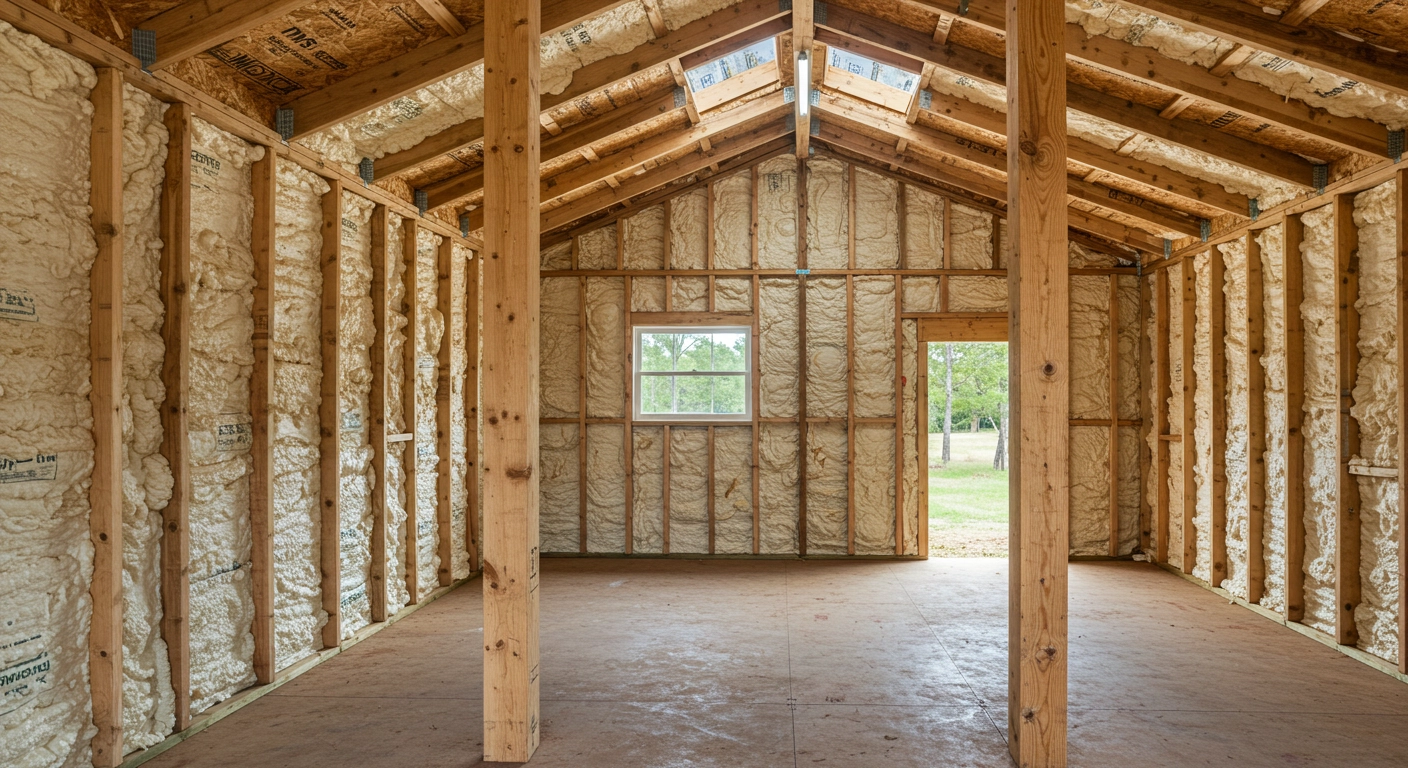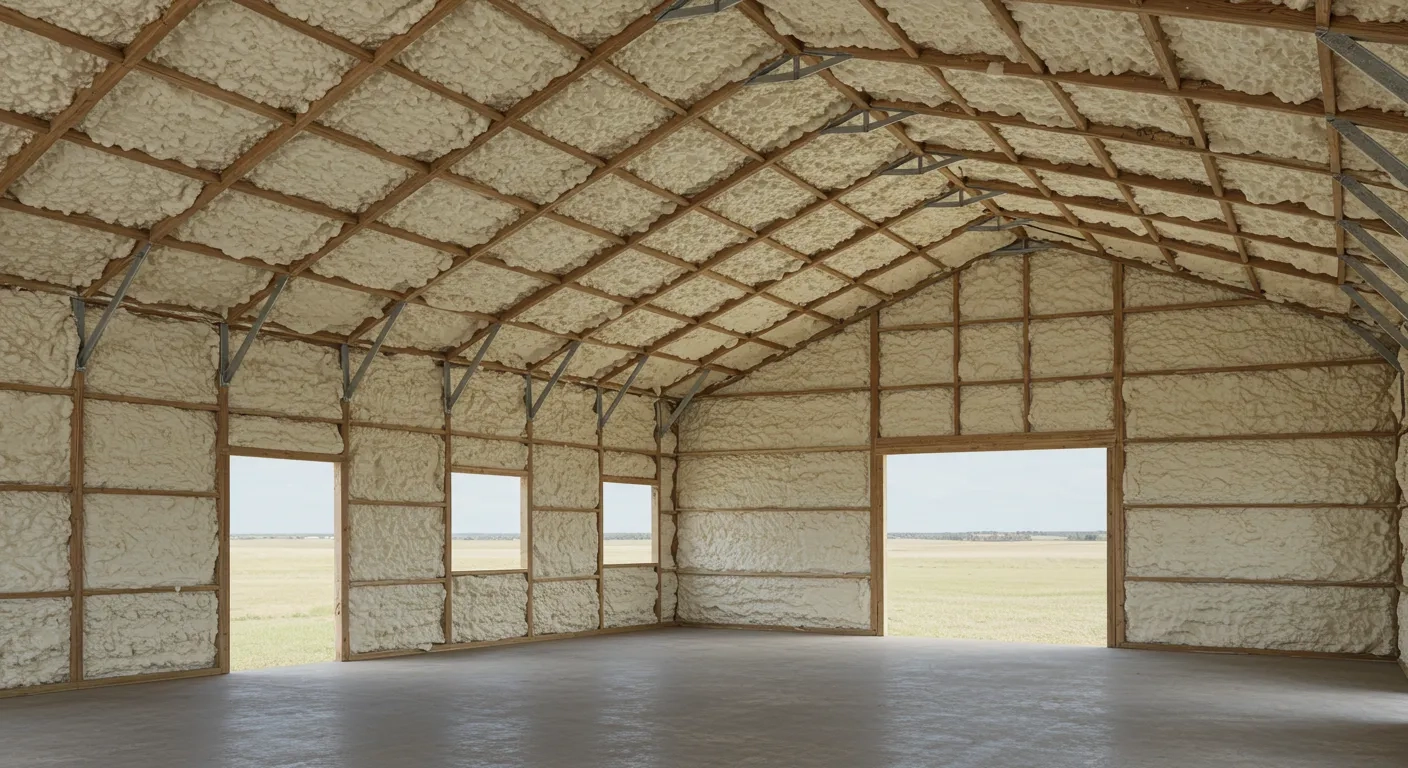
Older insulation in pole barns loses effectiveness over time, leading to temperature fluctuations, higher energy use, and potential moisture buildup. Upgrading is necessary when insulation no longer maintains a stable interior climate, shows signs of damage, or fails to meet current building standards. This often becomes clear through increased energy bills, condensation on walls or ceilings, or drafty areas during seasonal changes.
Insulation upgrades should be considered when the structure is being repurposed (e.g., from storage to workshop), when interior humidity becomes a problem, or when pests have compromised existing materials. Spray Foam Tech draws on direct experience across various Indiana climates to assess degradation patterns and performance failures that may not be immediately visible.
| Issue | Description |
|---|---|
| Uneven Temperatures | Hot or cold spots within the barn, often tied to thinning insulation |
| High Energy Consumption | Sharp rises in heating or cooling bills despite consistent usage |
| Moisture or Mold | Indicates poor vapor barrier function or insulation compaction |
| Pest Infestation | Rodents and insects often damage insulation materials |
| Structural Changes | Repurposing or new HVAC systems may demand better insulation |
Bonus Tip: Inspections after severe winters or wet seasons help detect early insulation breakdowns.
| Material | R-Value (per inch) | Air Seal Quality | Moisture Resistance | Typical Lifespan | Use Case Scenario |
|---|---|---|---|---|---|
| Open-Cell Spray Foam | 3.5 – 3.8 | Moderate | Low | 15-20 years | Interior walls, sound control needed |
| Closed-Cell Spray Foam | 6.0 – 7.0 | High | High | 30+ years | Extreme climates, high moisture zones |
| Blown-In Cellulose | 3.2 – 3.8 | Low | Moderate | 10-15 years | Attics or low-traffic areas |
| Fiberglass Batts | 2.9 – 3.8 | Low | Low | 10-20 years | Basic coverage, minimal humidity exposure |
| Rigid Foam Panels | 4.5 – 6.5 | Moderate | High | 20-30 years | Walls and foundations needing thermal break |
| Property | Spray Foam (Closed-Cell) | Fiberglass Batts | Cellulose | Rigid Foam Panels |
|---|---|---|---|---|
| Air Barrier | Yes | No | No | Partial |
| Vapor Retarder | Yes | No | Partial | Yes |
| Mold Growth Resistance | High | Low | Moderate | High |
| Compressive Strength | High | Low | Low | High |

Indiana’s humid continental climate—with cold winters, hot summers, and frequent freeze-thaw cycles—places pole barns under pressure to maintain thermal integrity year-round. Older insulation often fails to prevent condensation during winter or withstand expansion-contraction cycles, especially in barns without controlled HVAC systems. In such cases, insulation removal becomes a crucial first step before upgrading to more efficient thermal solutions.
Closed-cell spray foam performs reliably under these conditions by offering both thermal insulation and structural rigidity. In contrast, fiberglass and cellulose absorb moisture, degrading faster in Indiana’s high humidity.
Bonus Tip: In rural or unheated pole barns, prioritize materials that resist rodents and retain R-value even when exposed to ambient moisture.
Sudden drafts, musty smells, mold patches, or rising utility bills often signal that insulation is no longer effective.
Sometimes. If existing insulation is dry, mold-free, and not compacted, it can act as a base layer. Otherwise, full removal is safer.
Spray foam offers better air sealing and moisture resistance. Blown-in is quicker for large, open areas but needs dry, enclosed conditions.
Yes, especially if the barn is conditioned or used year-round. Roof insulation reduces radiant heat gain and condensation.
For questions about improving insulation in a pole barn, or to explore high-performance material options, contact Spray Foam Tech.
Phone: (765) 553-4636 Email: sales@spraytechkokomo.com
Every 2-3 years or after extreme weather events.
Typically over 30 years if installed properly and kept dry.
No, but spray foam can limit pest access points more effectively than batts or blown-in.
Yes. Aging fiberglass can release particles into the air. Mold growth on damp materials also affects air quality.
Most upgrades complete within 1-2 days depending on size and chosen materials.